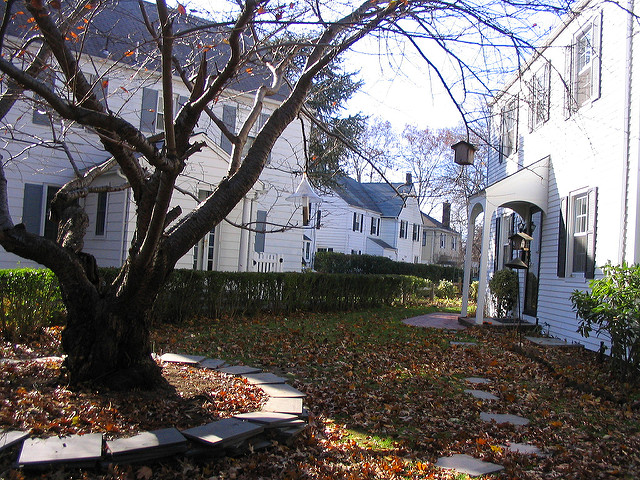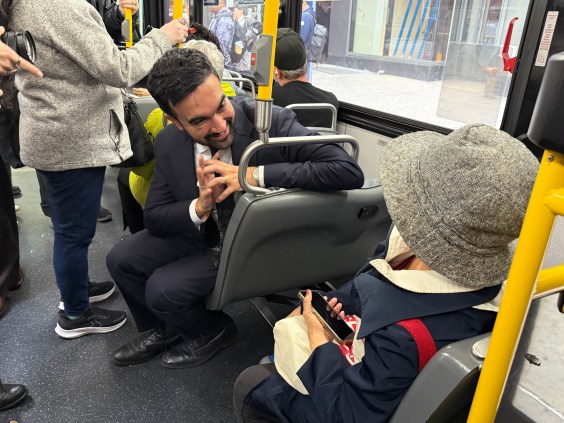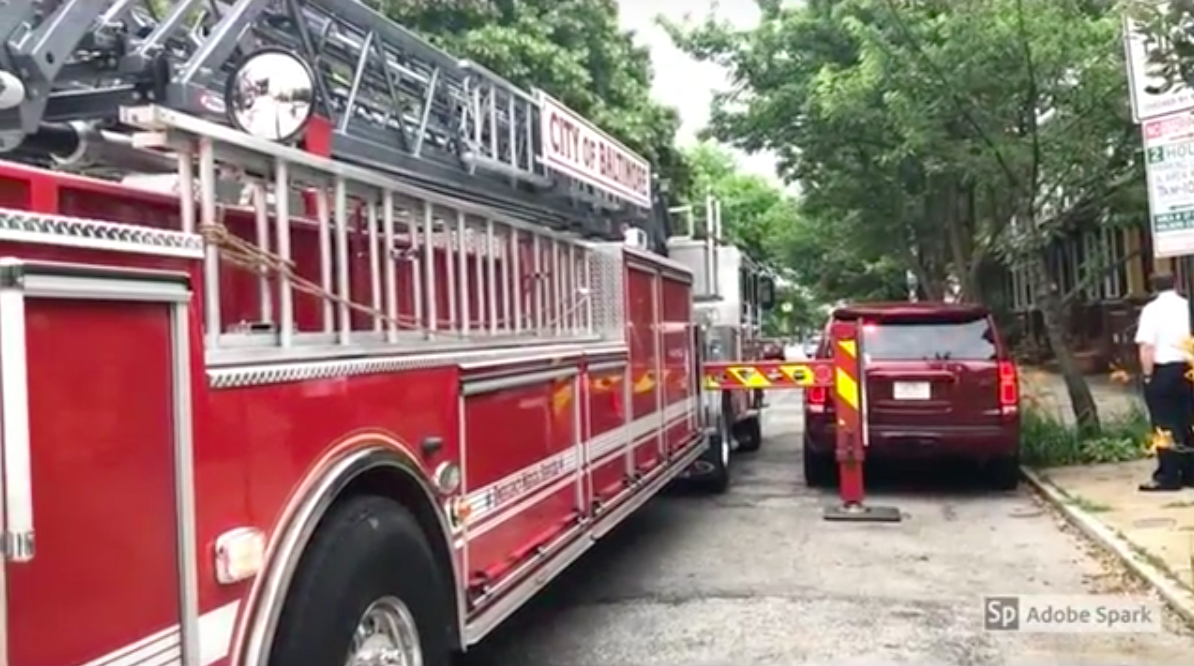There's one problem with the old saying, "It takes a village to raise a child": in modern America, there's no "village" anymore.
Read almost any current post across the mommy blogosphere and you'll hear tales of moms who are raising kids isolated from friends and family — and always needing a car to find any community.
Few women specifically cite sprawl and single-family housing in their writing, and there are obviously many culprits for the lack of support modern mothers feel. But the strain of physical separation is often apparent just the same.
Mommy blogger Sara Burrows wrote on her blog Return to Now that she surveyed her stay-at-home mom friends and readers. One in four of them reported having zero interaction with other adults in the typical week. In her essay, notes that "having our closest friends within walking distance would make a huge difference."
Then, she proposes a radically different living arrangement:
Our dream is to buy land with friends and have a dozen or so tiny houses, yurts, etc. along with a community garden and community kitchen, so our children have someone to play with every time they step outside and we adults have each other to talk to while we work, along with more time to play.
What type of housing is actually best for mothers? Not for children, but for their primary caregivers? For sexist reasons, we never seem to ask.
But in her book, The Design of Childhood, writer Alexandra Lange contemplates what type of living arrangements make raising children easiest. Lange says Burrows' has stumbled onto something important, in her yurt community ideal.
"Both suburbs and cities needed to be replanned around the idea of connected space," she told Streetsblog, "for there to be more communal facilities so socialization is built in."
While it's not tiny houses or yurts, Radburn, N.J., exemplifies a more mom-friendly model, much like what Burrows describes Lange says. A master-planned community built in 1928, Radburn is a lot like a traditional suburban cul-de-sac turned inside out. Rather than have houses front the street, they front a system of pedestrian paths and parks, with the cars parked along the outside.

That arrangement gives children much more independence.
"Kids can walk to access everything they need without crossing the street," Lange said. "The focus of the community is not this blacktop space, but this green lawn."
Burrows also envisioned a community kitchen, where families could cook together and share meals. Early feminists during the last century pushed for just such a thing, in order to ease the burden for women being solely responsible for meal prep.
The book, The Grand Domestic Revolution, published in 1981, explored feminist challenges to the American domestic sphere. Author Delores Hayden writes that feminists for more than a century have railed against "the physical separation of the household space from public space," and argued for the "feminist transformation of the home."
Early feminists like Jane Addams in 1910, for example, helped establish cooperative houses, like the Hull House, which had a public kitchen where women could cook together and their families could share meals. Hayden wrote "a new approach to collective domestic life seemed to be merging" aimed at reducing the burden of domestic work on women by making it a shared activity.
But feminists failed at transforming houses for the benefit of women. And the prevailing form, single family houses — and even apartments each with their own kitchen — help make domestic labor which overwhelmingly falls on women, like cooking, isolating.
But in the 1925 book The Suburban Trend, author Paul Douglas pointed out the way yards and houses multiply private, unpaid domestic duties for families:
More domestic work takes place in the residential suburb than in the city. It moves the woman from the apartment house with its centralized heating plant, its elevator, laundry, incinerator, and janitor service, and with no premises outside of the house, to the single or double house with its independent equipment for each family and its grounds to look after. More work is necessary to make the process of consumption efficient and agreeable and to maintain esthetic standards under these circumstances.
Common spaces like the ones Douglas described in apartment buildings could provide an opportunity for stay-at-home moms to interact and share child supervision responsibilities.
So why don't we see more communities like Radburn? More shared kitchens like the early feminists hoped?
Lange says, for one, it flies against the capitalist housing model. Building a community like Radburn requires a group of buyers that is committed to a more the cooperative model.
"It means you are giving up some of your private suburban space to the public good," Lange said. "That hasn’t been the narrative of American family life. The idea has been that you get more of your own space for your money."
Lange thinks that cultural notion can be hurtful.
"Actually more private space doesn’t make a better life-style," she said. "Think about what you really want access to and how you want to spend your time.
"It’s more fun for kids to play together on a big lawn than alone on a little lawn."
A more common version of the Radburn model you might see is a Californian Bungalow Court, where houses are situated around a central communal yard.

Unfortunately, modern zoning rules make this type of housing illegal practically everywhere in the United States. Many cities outlaw multi-family housing in all but very limited areas. Even in cosmopolitan Seattle, just 31 percent of land is zoned to allow any multi-family housing — apartments or row houses — at all.
Suburbs often have minimum lot sizes and rules about setbacks from the street. All sorts of ideas about the heteronormative ideal family life — and the role of women — have been codified in zoning laws. When they are challenged they are often met with intense resistance. For example, in cities like Portland and Seattle, movements to allow secondary dwelling units — "granny flats" — in single family neighborhoods have heated up in recent years, but they are often bitterly opposed by property owners in single-family neighborhoods.
As the name Granny Flats implies, however, this type of housing could allow for multi-generational family living — which might benefit mothers with young children the most.
Hat tip: Kate Matchett






